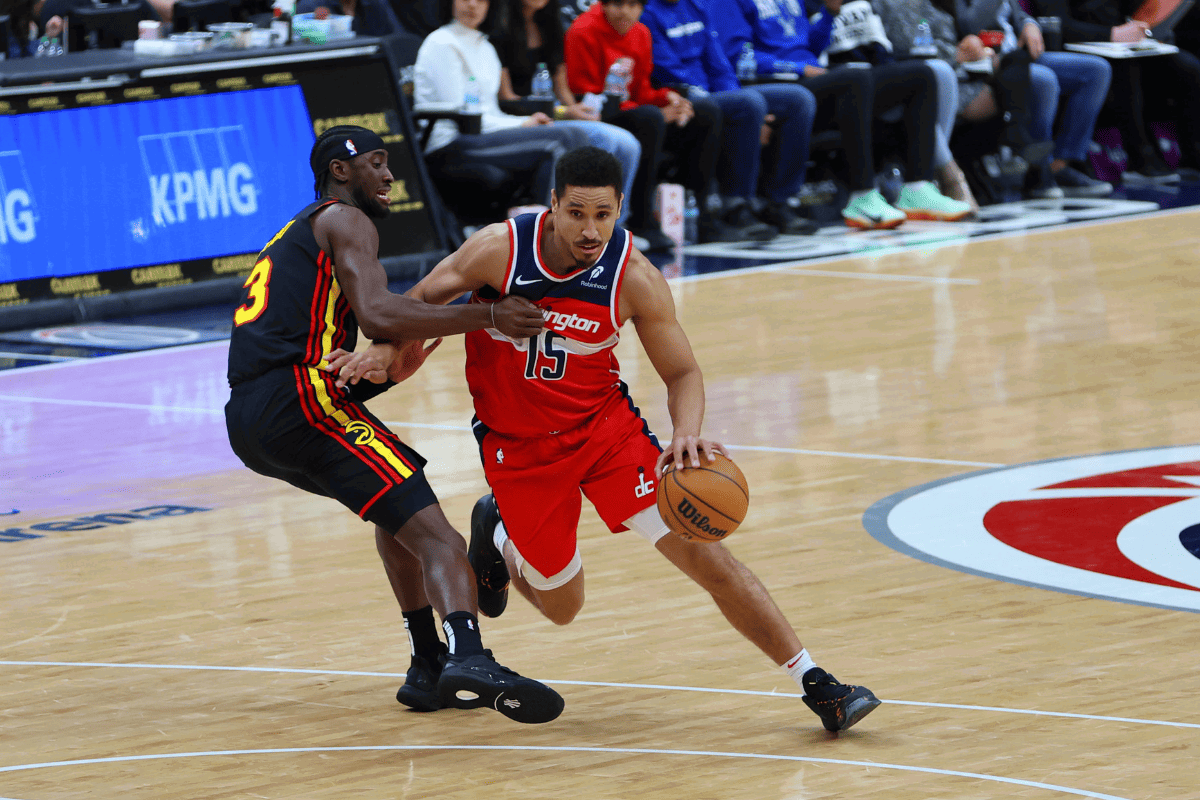
Imago
Credits: Imago

Imago
Credits: Imago
For a team on the rise, every move counts. They are entering the 2025–26 NBA season with heightened expectations following their strong performance last year. In what would be coach Tom Thibodeau’s final year before getting fired, the team advanced to the Eastern Conference Finals for the first time since 2000. Despite that momentum, the front office entered the summer with an obvious need: more reliable bench playmaking and a steady ball-handler who can relieve Brunson in late-game minutes. Flagging that shortcoming as a limiting factor for the Knicks’ depth, the team has been explicit in targeting low-risk veteran guards to fill it. So, the Knicks just checked off a major need, yet the real challenge could come with what happens next.
Watch What’s Trending Now!
Looking ahead to the upcoming season, the Knicks are counting on a mix of returning veterans and emerging talent to maintain their upward trajectory. Mitchell Robinson, Josh Hart, and Miles McBride are expected to take on larger roles, while Jalen Brunson continues to anchor the offense. New additions, Guerschon Yabusele, backup for Towns/Robinson, is a versatile defender and rebounder. While Jordan Clarkson, the primary sixth man, would bolster the Knicks’ bench needs, addressing last season’s league-worst bench output are intended to strengthen depth across the roster and provide support for the team’s championship aspirations.
Furthermore, in recent roster moves, reported by insider Shams Charania, the New York Knicks have bolstered their backcourt by signing veteran guards Landry Shamet and Malcolm Brogdon to one-year, non-guaranteed contracts. Shamet, 28, returns to the Knicks for his eighth NBA season after contributing as a reserve last year. Brogdon, 32, brings a wealth of experience, including a 2017 NBA Rookie of the Year award and a 2023 Sixth Man of the Year honor. However, these signings have financial implications.
ADVERTISEMENT
Free agent guard Landry Shamet has agreed to a one-year deal to return to the New York Knicks, his agent George S. Langberg of GSL Sports Group tells ESPN. Shamet stays with the Knicks for his 8th NBA season. pic.twitter.com/oFtvDcLIA4
— Shams Charania (@ShamsCharania) September 11, 2025
The NBA’s salary cap for the 2025–26 season is set at $154.6 million, with the luxury tax threshold at $187.9 million. The second apron, a stricter spending limit, is set at $207.8 million. Teams exceeding this threshold face severe penalties, including restrictions on sign-and-trade transactions, limited access to the mid-level exception, and prohibitions on trading first-round picks seven or more years into the future.
Currently, the Knicks’ total salary commitments for the upcoming season are approximately $206.4 million. With the addition of Brogdon and Shamet, the team is operating near the second apron. To comply with league regulations and avoid penalties, the Knicks may need to make a roster move, such as cutting or trading players such as Pacome Dadiet or Tyler Kolek, to stay under the second apron limit. However, moving these players may not free up sufficient cap space to avoid exceeding the second apron.
ADVERTISEMENT
The Knicks’ front office faces a challenging decision in balancing roster depth with financial constraints. Failing to navigate this situation effectively could result in the team incurring penalties that would limit their flexibility in future transactions. As the season approaches, the Knicks must weigh their options carefully to ensure compliance with salary cap regulations while maintaining a competitive roster.
ADVERTISEMENT
Why the Knicks could face harsh penalties under the second apron
More than a financial threshold, the second apron rule is designed to punish teams that consistently overspend, and its penalties can reshape rosters. The Boston Celtics offered a cautionary example last season. Despite coming off a championship in 2023-24 season, they were forced to trade away Jrue Holiday and Kristaps Porzingis in quick succession this offseason. Not because of on-court performance but because their payroll structure left no room to maneuver.
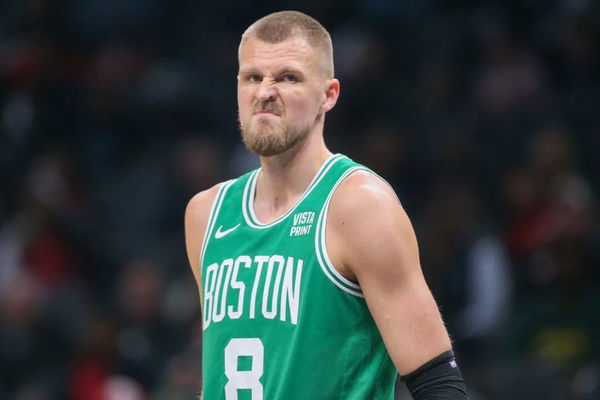
USA Today via Reuters
Mar 25, 2024; Atlanta, Georgia, USA; Boston Celtics center Kristaps Porzingis (8) in the game against the Atlanta Hawks in the first quarter at State Farm Arena. Mandatory Credit: Brett Davis-USA TODAY Sports
For the Knicks, the concern is similar. By adding Malcolm Brogdon after already bringing back Landry Shamet, New York is brushing against the second apron. If they exceed it, the penalties kick in immediately: the front office would lose access to the mid-level exception, be unable to use trade exceptions or cash in trades, and face restrictions on future first-round picks.
ADVERTISEMENT
This is also significant since Jalen Brunson signed a four-year, $156.5 million extension in July 2024, forgoing a potential five-year, $269 million deal in 2025 free agency, a $113 million concession that keeps the Knicks below the second-apron threshold for enhanced trade and signing flexibility.
Top Stories
Respect Pours In for Shaquille O’Neal, Charles Barkley After $200,000 Announcement
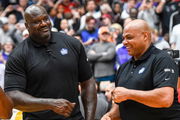
Caitlin Clark Announces Final Decision on Project B, Addresses Lockout Stance in CBA Talks
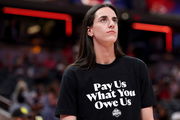
Victor Wembanyama Doesn’t Hold Back Against Shai Gilgeous-Alexander After Spurs-Thunder NBA Cup Semi-Finals
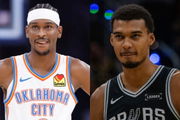
Lakers’ Gabe Vincent Dishes on LeBron James, Luka Doncic’s Sacrifices, Role on the Team and More (Exclusive)
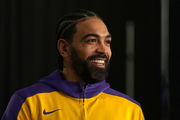
Are Giannis Antetokounmpo, Michael Porter Jr Playing Tonight? Bucks vs. Nets Latest Injury Report (Dec 14)

This team-friendly structure allows the front office to retain core pieces like OG Anunoby and Karl-Anthony Towns without punitive cap restrictions, prioritizing sustained contention over immediate max value.
By modeling championship blueprints from figures like Patrick Mahomes and Tom Brady, Brunson ensured New York’s payroll stays manageable at around $187 million for 2025-26, freeing up room for bench upgrades.
ADVERTISEMENT
Mikal Bridges followed suit with a four-year, $150 million extension in August 2025, accepting $6 million less than his max-eligible $156 million to mirror Brunson’s sacrifice for long-term roster building.
Perhaps the most damaging outcome, if the Knicks remain above the apron for three of the next five years, will be that their first-round selection would automatically drop to the end of the round. That risk is why seemingly small veteran minimum signings carry major consequences, and why New York may be forced into a tough trade or cut before the season tips off.
ADVERTISEMENT
ADVERTISEMENT
ADVERTISEMENT

